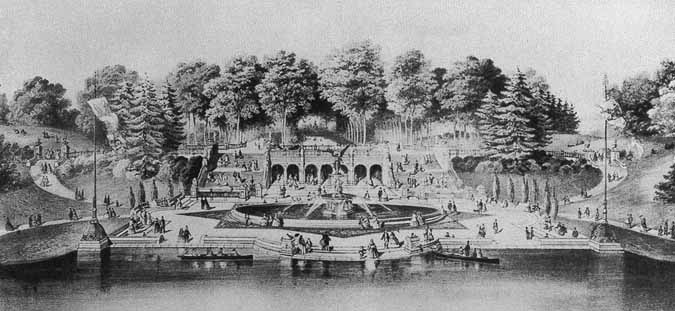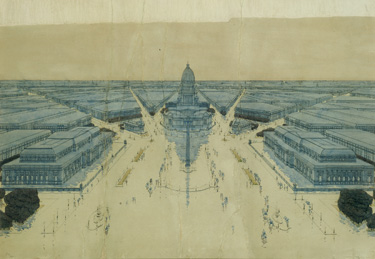 |
| [Young's work involves performative walking.] |
As it turned out, I found myself sitting next to Marcus Young, the official artist-in-residence for the city of St Paul. I've long been a fan of Young's work, and consider him one our keenest thinkers about the connection between cities and art. Marcus was the brains behind St Paul’s inexpensive and innovative sidewalk poetry program, and his other work involves things like performative walking and public art. At any rate, Marcus stood up, introduced himself as the city’s artist-in-residence, and said he was interested in “the intersection of environment, behavior, and inner life.”
Maybe I was too sleepy, but I thought little of it at the time. We went on through the meeting, which lasted pretty much all day and involved a lot of brainstorming about things like the MUTCD (eeek) and different kinds of design manuals. By 5:00, everybody was both encouraged about, and weary of, urban design.
Later that day, when I was chatting with Young about the meeting, he asked me a question. During the meeting, one of the moderators had made a reference to Young’s stated interests. Curiously, when described them, he removed the term “inner life” from list. He said something like, “I too am very interested in the relationship between environment and behavior.” “Why,” Marcus asked me later, “was nobody interested in having a discussion about inner life?"
Planning's Determinist Legacy
 |
| [For reformers like Riis, slums bred vice.] |
For architects, planners, and urban designers, however, the connection between inner life and environment is nowhere to be found. Today, these disciplines have nothing to say about how spaces affect our thoughts. There are lots of reasons for this curious omission, mostly having to do with politics, power, and the long history of connecting space to morality. For example, the early history of US city planning traces its roots back to the urban reform movement in late 19th century cities. At that time, huge teeming slums were synonymous with immigrants. Page through a book like Jacob Riis’s How the Other Half Lives, and you quickly see that there was little distinction made between substandard housing and crime LINK. At that time, the connection between environment and inner life was quite clear: slums bred immorality. The way to reform the city was to build better buildings, to inspire dirty and densely packed immigrants to embrace temperance and respect for the state through classical architecture, grand boulevards, and bucolic Olmsted-ian parks.
 |
| [Olmsted's Central Park was a moral project, as much as anything else.] |
Today, planners and architects almost insist on this principle, refusing to suggest any link between environmental design and inner life. Linking them would be condemned as “social engineering,” probably the cardinal sin of planning. This insistence on the abstract external world mans that architecture might be considered beautiful, but it’s not inspiring. Cities might be liveable, but they’re not spiritual. Motivations for good urban design must always be described using abstract measures and external reasoning. Anytime designers cross this invisible barrier between outer world and inner self, they become visibly uncomfortable.
 |
| [Unlike Burnham's Chicago, planners and architects no longer explicitly conect cities to inner life.] |
Inner Space: The Final Frontier
It would be nice if there was some way to talk about the connection between environment and inner life without turning into a 20th century moralist. Words and concepts like “place,” “community,” and “quality of life” can point toward the conversation, but don’t really get us there. Maybe this is a role for artists. How do we begin to talk about how spaces make us feel, and why this is important? I don’t know, but stamping poetry into the sidewalk is probably a good start.
 |
| [Tonight in the dark kitchen only the stainless steel sink holds the moon.] |
2 comments:
Great article. I came across sidewalk poetry like St. Paul's last month in La Crosse, WI. Seeing that poetry late at night, tired, was like the sun coming out.
http://blogs.scientificamerican.com/anthropology-in-practice/2012/10/17/the-story-of-grand-central-station-and-the-taming-of-crowd/
Post a Comment